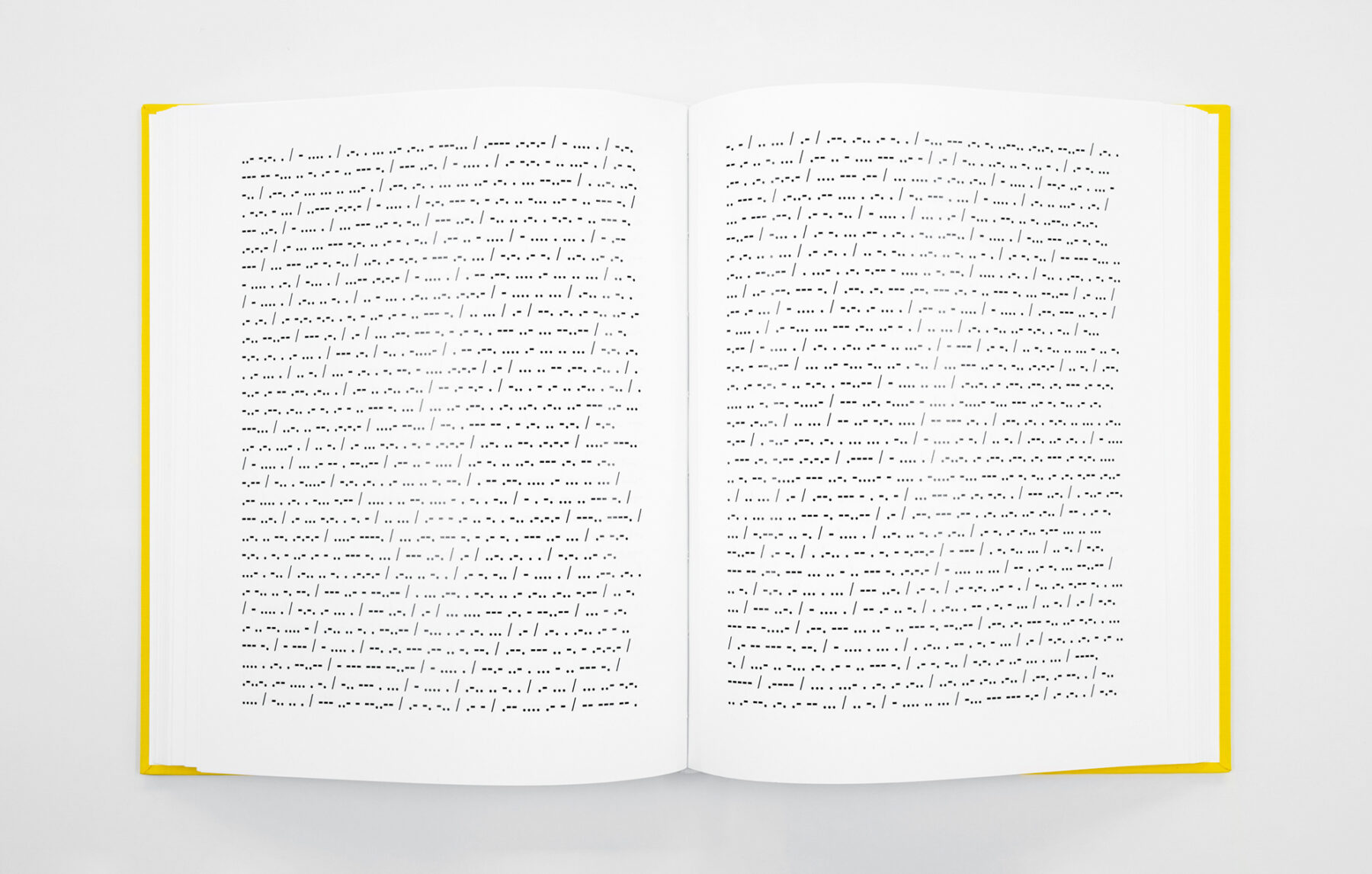.-/
Point and Line to Plane (1926) by Wassily Kandinsky is translated into Morse code. Gaviria first used Kandinsky’s text in the video work -./, in which he rendered the index of the book as an audio-visual image using Morse code.
In this more recent iteration, the fast-paced flicker of the video image is replaced by a transcript of Kandinsky’s text in Morse code. As two early innovative concepts of the abstraction of information (one through the fluctuation of electrical pulses, the other via the underlying geometry in a two-dimensional representation), this union seems surprisingly appropriate, fortuitous even, as the signs, “.”, “-” and “/” used to write Morse code can just as easily be read as “Point”, “Line,” and “Plane,” respectively.
Playing on the title of Kandinsky’s book Point and Line to Plane (1926), in .-/ Gaviria continues his investigation of code and language. In this work Gaviria transcribes Kandinsky’s book into Morse code. The transcription uses the typographic period, hyphen, and slash (hence, .-/) for a Morse code substitution “cipher.” The formal effect is similar to Gaviria’s A Mathematical Theory of Information, ultimately reducing the work to encrypted text. Most curiously, Gaviria’s choice to replace the timing sequence of Morse code transmissions with the typographic slash (“/”) is a visible performance of “time axis manipulation.” Time axis manipulation is the ability to manipulate one of the most basic experiences of human existence, the irreversibility of the flow of time (Krämer, “The Cultural Techniques of Time Axis Manipulation,” 96) . What makes media technology like Morse code so special is that time itself becomes a variable that can be manipulated. This manipulation of time is concretized and made visible in .-/.
Gaviria’s .-/ makes the time axis manipulation visible in the media itself. In live Morse code the transmission timing is set by the sender’s “fist” (the frequency and way in which the key or bar is pressed, comprising a “signature” of sorts). Typically, typographical depictions of Morse code transmission elide this important feature, replacing the steady rhythm of dits and dahs with empty space when written on the page. Gaviria elects to show the temporal gap—the time axis—with a slash, thereby revealing the manipulation of the code transcription.
– Quinn DuPont
